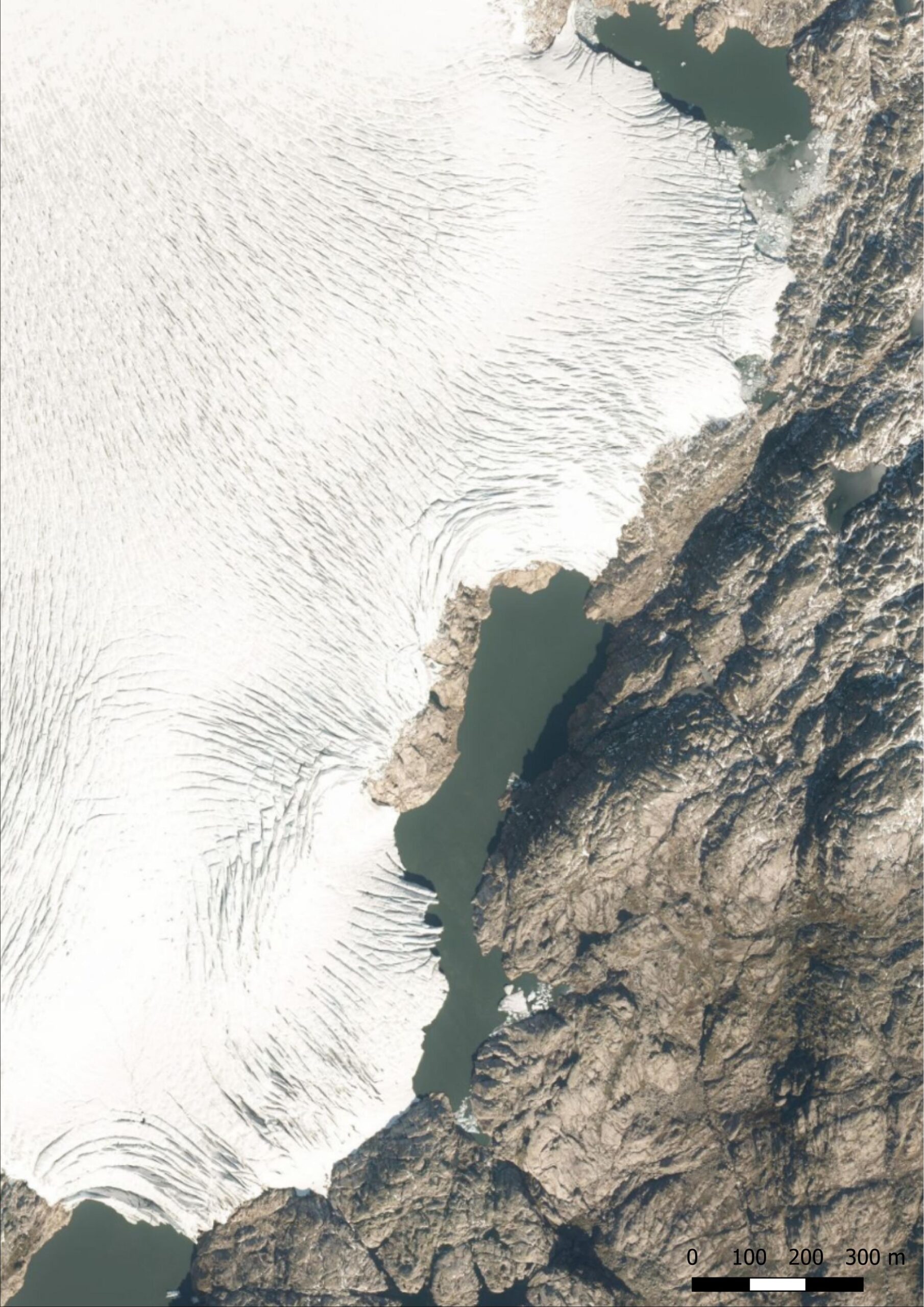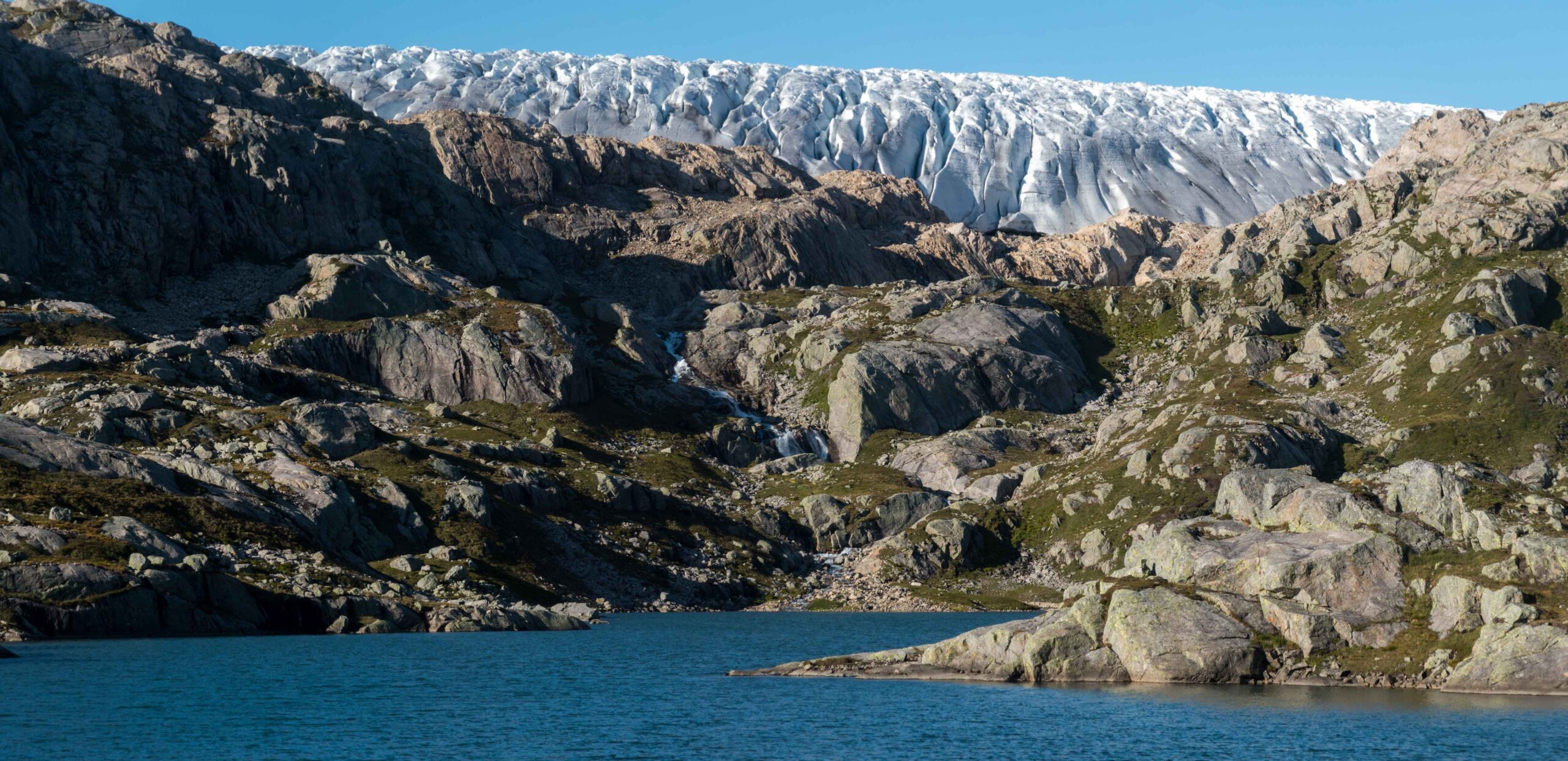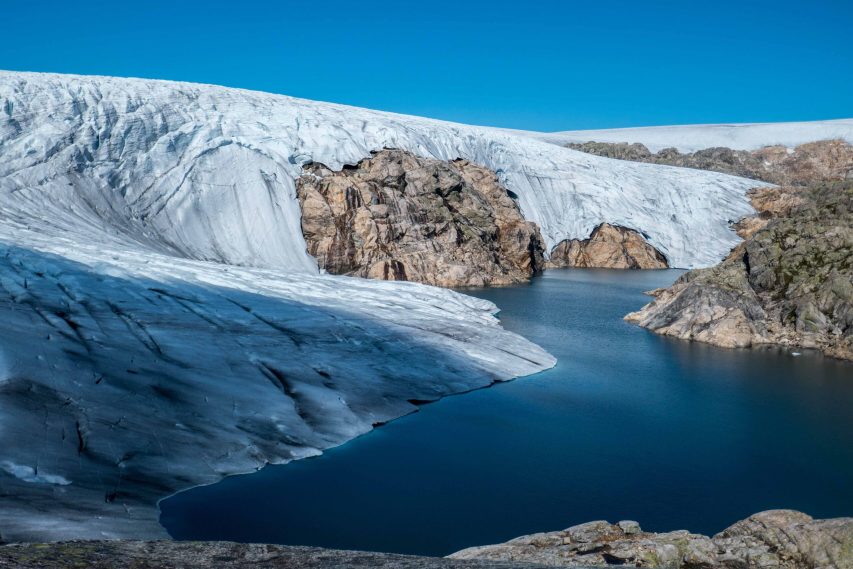Blomstølskardsbreen is located in the southern part of Folgefonna and borders the Svelgjabreen in the west. The glacier covers over 22 square kilometers and ends at an altitude of thousand meters, much higher than other glaciers. The snout calves a little.


The lake is expanding at the expense of ice between 2006 (left) and 2019. Source: norgeibilder.no
Just as neighboring Svelgjabreen, Blomstølskardsbreen has receded only little in the past decades. Until recently it was even thought that Blomstølskardsbreen was gaining mass, but this was a false claim due to incorrect measurements. The common practice of mass balance measurements by digging a snow pit in spring resulted in an overestimation of annual snow fall by over half meter. After (geodetic) recalculations, nothing was left of the mass gain calculated previously over the period 2007-2017 (Kjøllmoen, 2018).

The updated results better fit the behavior of Blomstølskardsbreen, as it was more or less stable in these years. The glacier should have grown if it indeed gained mass. After 2017, the glacier has started to recede quickly and lost over a hundred fifty meters in just six years. That’s still a very modest decline compared to other Norwegian glaciers and is not a big surprise, given the fact that Blomstølskardsbreen was at its maximum extent in 1940, much later than other glaciers in Norway (Wittmeier, 2010).
Not many people walk up to Blomstølskardsbreen. There is no marked trail to the glacier, so some navigational skills are required. One way to go there is by walking through Inste Botnane, a valley with multiple lakes. While walking along the shores Folgefonna is closeby and it looks as if the ice cap threatens to engulf the valley. For those who are willing to climb some mountain tops there are beautiful views over the ice cap to be had.


Blomstølskardsbreen terminates in three lakes and partly calves into them. Although the icebergs can’t match those in Iceland, it is a spectacular and rare sight in Norway. Reaching the glacial lake Blomstølskardsvatnet is an achievement in its own right, but you will be tempted to walk around it to visit the second lake. Crossing the ridge to the east is not too hard and there is even a little shelter, just in case. After two kilometers in a northeasterly direct the second lake appears. There, you are surrounded by glacial ice. Parts of it dive steeply into the lake, like a frozen waterfall. Other parts are hanging threatening over steep rock faces. Every year more of the lake becomes ice-free. In time, this unique glacier will leave the water completely. After the last iceberg is melted, Blomstølskardsbreen is just another retreating glacier.
Search within glacierchange: